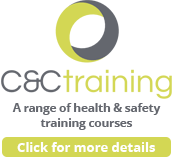People do make mistakes and equipment can malfunction, but much can be done to prevent accidents happening in the first instance. Employers have a duty to effectively manage the working environment, their employees and those who may come into contact with their work, so that the likelihood of an accident occurring can be reduced to as low as reasonably practicable.
Complete suitable and sufficient Risk assessments
In order to know what will harm employees and visitors, employers need to assess the risks associated with the work that is carried out.
This exercise is invaluable, as it will help to identify the workplace hazards so that they can either be eliminated or controlled adequately. It is important to remember to review risk assessments after an accident as well as at regular intervals. Accidents may well highlight issues that were not considered previously.
Provide Information, training and supervision
Adequately trained and well-informed employees are able to carry out their job roles more safely than those who lack knowledge. This, in turn, reduces the number of accidents in the workplace. Training must be specific to the associated risks but also the employee; it is unlikely that a finance officer will benefit from Senior management should understand the limitations and expectations of their trained employees so that their decision making can positively affect the protection of their workers.
Trained employees will ultimately display good safety behaviours, a sign of a healthy and positive safety culture. Training should be regular, and refresher training provided at the required intervals as practices and technology change.
Supervision is important in ensuring that incorrect and unsafe methods of work are picked up so that employees can be guided on corrective actions which will reduce the likelihood of them harming themselves or others.
Information can be relayed to employees by way of internal policies and procedures; one of the most important being the health and safety policy, in which an employer will state how it will manage safety and give detail to roles and specific health and safety responsibilities. Other documents will include procedures that detail how specific tasks are to be completed safely to prevent the likelihood of harm to the employee.
Provide and maintain safe equipment
All the training in the world cannot compensate for workplace equipment that is not in a safe working condition. A robust inspection and maintenance regime will ensure that equipment is checked and safe for use, which will reduce the likelihood of failure which can lead to an accident. Specific pieces of equipment may need to be maintained at set intervals and by a competent person; this must be considered. Employees can also be trained in how to inspect equipment — simple visual inspections can make a big difference. Personal protective equipment, although the last form of defence, can play a role in reducing the severity of an unwanted event.
Learning from incidents
A notable way of preventing accidents from occurring is to take lessons from when they do happen. This reactive approach will not only assist in understanding how an event occurred but also highlight what remedial actions need to be implemented to prevent it from happening again, such as training, redesign of a work task or change in location.
Reporting accidents
All accidents should be reported using internal reporting systems. This enables an understanding of the immediate and root causes and any trends or patterns, which will aid the decision on what preventive measures are required. Depending on the severity, nature and amount of time an employee has off work due to their accident, it may need to be reported to the HSE under RIDDOR (the Reporting of Injuries, Diseases and Dangerous Occurrences Regulations 2013). Employers are legally required to report specific events such as fatalities and where an employee suffers a major injury or is incapacitated for more than seven consecutive days (not counting the day of the accident but including any weekends).
Accident reports inform risk assessments, inspections, audits, safety tours and sampling as they highlight the areas to focus on. Sometimes further investment is needed to ensure unwanted events do not occur.
Reporting also shows employees that their employer takes accidents and the prevention of accidents seriously. Where accidents are not reported and therefore not investigated, they are more likely to reoccur, leaving employees vulnerable to harm and lacking morale.
Accident investigation
Investigating accidents in the workplace is the only way that an employer can understand why an event occurred and how. Through the investigating period, employers will gain insight into what really happened as opposed to what is expected to happen, and whether employees are utilising the safe practices that they have been instructed to follow. The investigation is an opportunity to establish what else needs to be done and what could have been missed previously when assessing workplace risks.
Investigations should be carried out by those who are competent to so do, such as a manager with understanding of health and safety practices and the law, knowledge, and experience on how to investigate — as well as knowledge of the work that was being undertaken. Investigators must be avoid placing blame on individuals and avoid bias. They must be given the necessary time and resources to complete the investigation and be able to report to a senior member of staff with the authority to make decisions on the recommendations made. Line managers, health and safety advisors and union and safety representatives can also carry out investigations.
Accident investigation is a reactive measure; therefore, it would be better to have prevented the accident ever happening — but it has its benefits. Instigating preventive measures or tweaking those in place following an accident will not only keep employers safer while at work but it will reduce the costs associated with accidents. The financial loss resulting from an accident takes away from areas that could have been improved with those funds, such as employee training, health and wellbeing, better equipment, and better facilities.











